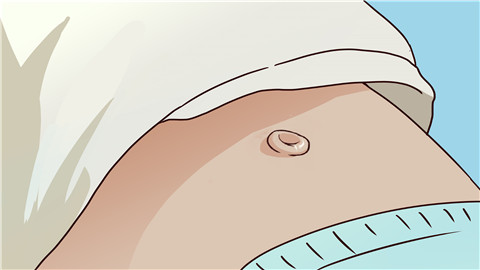What are the causes of a large abdominal circumference in newborns?
Generally, a large abdominal circumference in newborns may be caused by physiological abdominal distension, individual developmental differences, improper feeding, ascites, or congenital megacolon. If abnormalities are observed, timely medical consultation is recommended. Detailed analysis is as follows:
1. Physiological Abdominal Distension
Newborns have weak abdominal muscles, and a certain amount of gas in the intestines can cause slight abdominal distension, resulting in a relatively larger abdominal circumference, which is a normal physiological phenomenon. Gently patting the newborn's back after feeding helps expel gas from the stomach. Avoid excessive abdominal wrapping and keep the abdomen relaxed.
2. Individual Developmental Differences
Influenced by genetic and intrauterine nutritional factors, some newborns may accumulate more abdominal fat or have different proportions of abdominal organ development, causing a slightly larger abdominal circumference compared to peers. Regular monitoring of the newborn's weight, length, and other growth indicators is recommended. No special intervention is needed if overall development is normal.
3. Improper Feeding
Excessive milk intake or rapid feeding can lead to milk or gas accumulation in the gastrointestinal tract, increasing abdominal circumference, possibly accompanied by spitting up or abdominal distension. Adjust feeding volume and speed, using smaller and more frequent feedings. Avoid laying the newborn down immediately after feeding; holding upright for a while is recommended.

4. Ascites
Infections, hypoalbuminemia, or other causes may lead to fluid accumulation in the abdominal cavity, increasing abdominal circumference, often accompanied by poor mental status and reduced feeding. Treatment under a physician's guidance with medications such as Cefotaxime Sodium for injection, Human Albumin Injection, and Furosemide Injection may be necessary.
5. Congenital Megacolon
Some newborns suffer from congenital megacolon, where abnormal intestinal motility causes fecal accumulation, intestinal dilation, and abdominal distension, possibly accompanied by significant constipation. Timely intestinal examinations are necessary, and under medical guidance, medications such as Lactulose Oral Solution, Glycerin Suppositories, and Bacillus Subtilis Live Biotherapeutic Granules may be used to relieve symptoms. Surgical treatment may be required in some cases.
In daily life, closely monitor the newborn's abdominal condition and mental status. If abdominal circumference continues to increase or is accompanied by vomiting or persistent crying, immediate medical attention is required.






